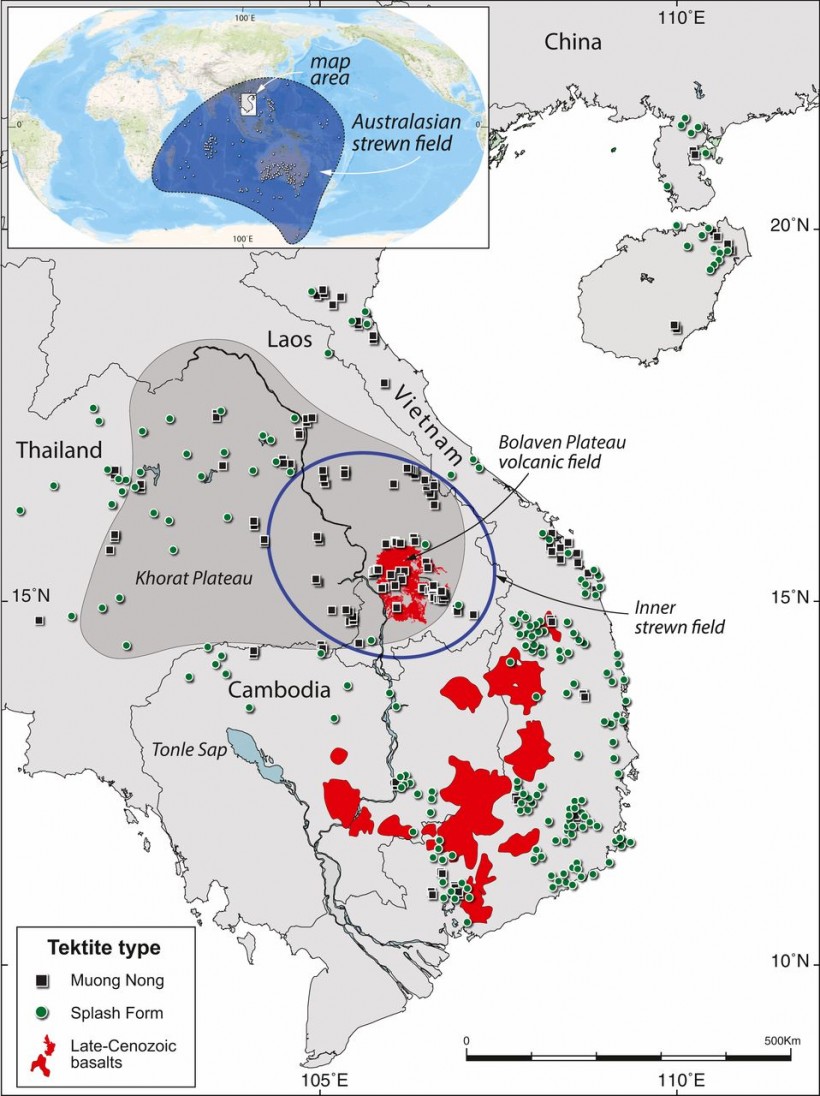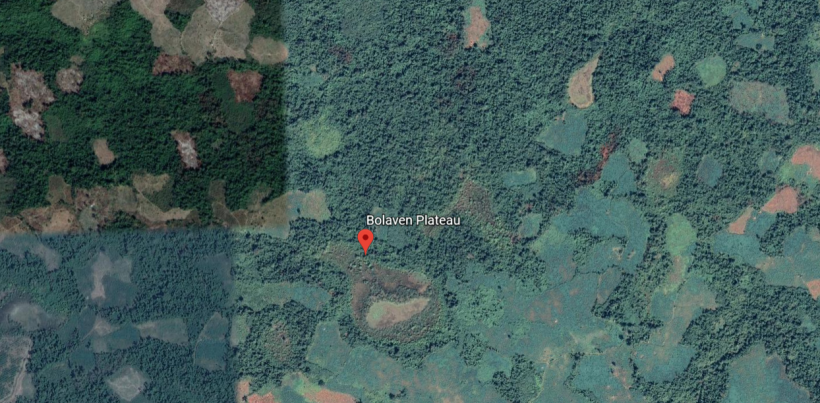It is known that asteroids crash on the Earth's surface in the form of meteorites back when its atmosphere is still thin. Meteorites are objects from space that are successful in entering the planet's atmosphere. These meteorite crashes are so frequent that scientists theorized that the extinction of the dinosaurs was partially caused by a meteorite impact. If Earth really suffered from meteorite trauma, there should be some remnants of it, right?
READ: Kilauea Caldera Collapse Caused by a Tiny Leak in Volcano
Recently, scientists discovered the whereabouts of the crater made by one of the largest meteorites that struck the planet 800,000 years ago. The clues leading to the impact site were provided by small (around the size of a pebble), glassy objects called tektites. According to scientists, they theorized that tektites were formed from Earth material that was melted and thrown into the atmosphere upon the impact of the meteorite.

Also according to the scientists, the crater possibly lies beneath a 910-cubic-kilometer area in the Bolaven plateau volcanic field in Laos. Accordingly, the supposed meteorite that hit the Earth was 2 kilometers wide and that its impact on the planet is so great that debris flew to places as far as Australia, and other places in Asia. In an article written by CNN, Professor Kerry Sieh, principal investigator from the Earth Observatory of Singapore he explains that the existence of tektites only means that the meteorite was massive and its travels very fast that it was able to melt the rocks upon contact.
Tektites are abundant across the planet and most are dated between 750,000 - 3.5 million years old. According to the records of the Jackson School Museum of Earth History at the University of Texas in Austin, the areas where tektites are scattered are called strewn fields and they are pretty much scattered all over the world except for Antarctica.
Scientists have recently been able to identify the source crater for tektites and it is so massive that it extends from southern China to the southern region of Australia. Unsurprisingly, this area is the largest known source of tektite in the whole world. Sieh explained that prior to this finding, there are a lot of attempts in finding this impact site. Scientists previously suggested places in northern Cambodia, central Laos, and southern China that may possibly be home to the impact crater.
However, Sieh explains that the study conducted by him and his team is the first to collate lines of evidence including the chemical nature of the tektites, to its physical characteristics and gravity measurements, and the measurement and the probable age of the lava that buried the crater. According to the team's calculations, the hidden impact crater is about 13 kilometers wide and 17 kilometers long.
The scientists admit that there is still a lot of work to do to confirm their theory regarding this massive meteorite crater and one of the methodologies they are planning to do is to drill down the area to see if the rocks present beneath the surface are the same rocks that are commonly found in impact sites. For Sieh, finding those rocks is important because they will hold plenty of evidence for melting and shattering.











!['Cosmic Glitch' in Einstein's Theory of General Relativity Could Be Explained in This New Scientific Tweak [Study]](https://1721181113.rsc.cdn77.org/data/thumbs/full/53435/258/146/50/40/cosmic-glitch-in-einsteins-theory-of-general-relativity-could-be-explained-in-this-new-scientific-tweak-study.jpeg)



